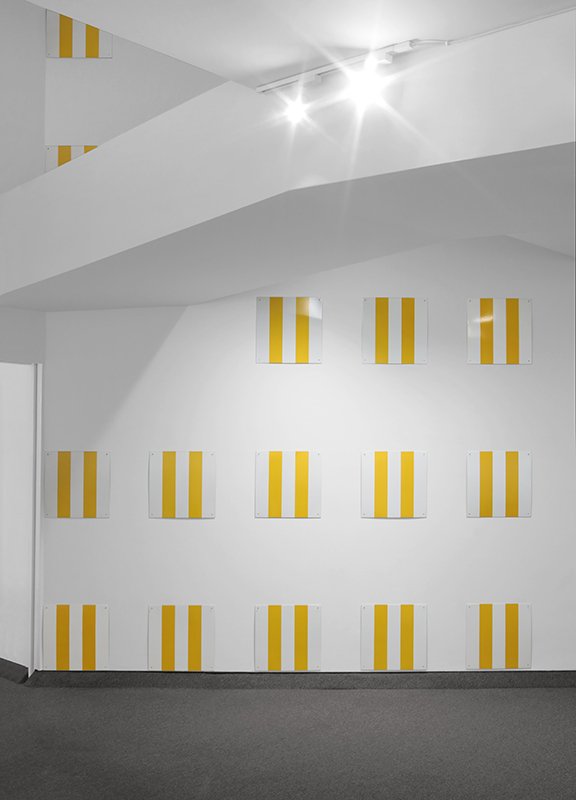Installation dimensions are variable, each plate is 17 1/8 x 17 1/8 inches (43 1/2 x 43 1/2 cm)
Limited to 15 installations
Each installation is produced in a unique color
Includes a signed and numbered certificate
(Inventory #33128)
Installation dimensions are variable, each plate is 17 1/8 x 17 1/8 inches (43 1/2 x 43 1/2 cm)
Limited to 15 installations
Each installation is produced in a unique color
Includes a signed and numbered certificate
(Inventory #33128)

Twenty-five Enamel Plates
The 25 enameled plates are to be mounted equidistantly in five rows of five plates, and equidistantly in five columns of five plates. The precise placement of the plates within the rows has to be calculated so that there is a continuity of the plates’ pattern of alternating vertical stripes (8.7 cm) within the installation. The top plate of each column must touch the ceiling, the bottom one of each column must touch the floor, with the plates equally spaced between ceiling and floor. The rows begin at the very left, with plates touching the wall’s edge. The plates within the rows are to be equally spaced so that they ideally fill the whole width of the wall, yet still maintain the alternating stripe pattern. By doing this, more often than not, there will be an empty space between the last plate and the right edge of the wall. If this empty space exceeds 69.6 cm (which equals four spaces of two stripes’ width) and thus allows a wider spacing of the plates within the rows, the four spaces between the five plates have to be increased by two stripes’ width each, so that the alternating stripe pattern of the installation is maintained. Therefore, spaces between plates along the rows equal either 1 stripe (which is the minimum required) or 3 stripes or 5 stripes, etc. The wall must be at least 217.5 cm high and 252.3 cm wide (the minimum space needed to fit 25 plates), and may be of any color or texture. If the wall has a door, window, or any other feature at a spot where a plate should be placed, that plate should be omitted. The installation cannot be executed if more than 10 such displacements must occur.